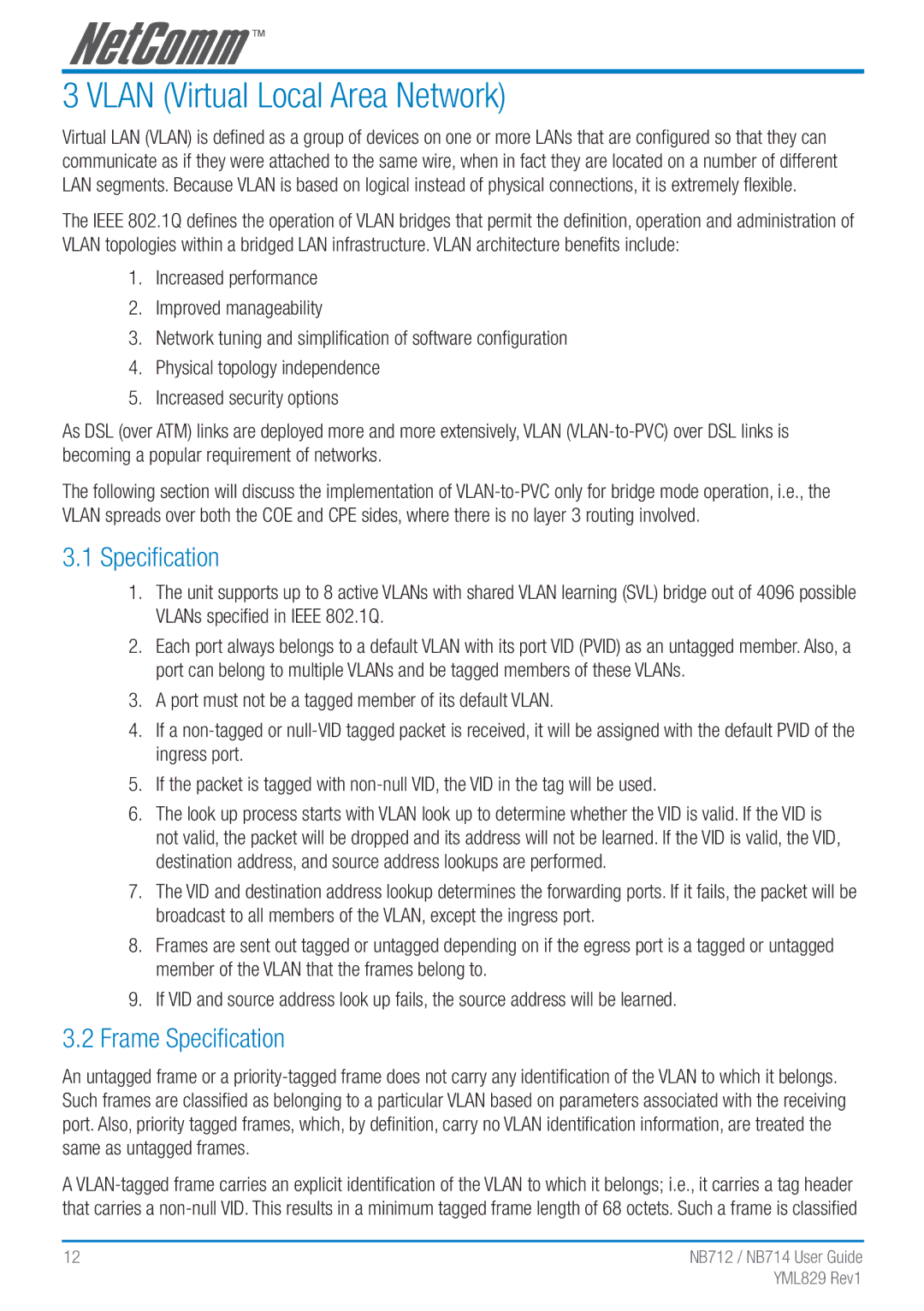
3 VLAN (Virtual Local Area Network)
Virtual LAN (VLAN) is defined as a group of devices on one or more LANs that are configured so that they can communicate as if they were attached to the same wire, when in fact they are located on a number of different LAN segments. Because VLAN is based on logical instead of physical connections, it is extremely flexible.
The IEEE 802.1Q defines the operation of VLAN bridges that permit the definition, operation and administration of VLAN topologies within a bridged LAN infrastructure. VLAN architecture benefits include:
1.Increased performance
2.Improved manageability
3.Network tuning and simplification of software configuration
4.Physical topology independence
5.Increased security options
As DSL (over ATM) links are deployed more and more extensively, VLAN
The following section will discuss the implementation of
3.1Specification
1.The unit supports up to 8 active VLANs with shared VLAN learning (SVL) bridge out of 4096 possible VLANs specified in IEEE 802.1Q.
2.Each port always belongs to a default VLAN with its port VID (PVID) as an untagged member. Also, a port can belong to multiple VLANs and be tagged members of these VLANs.
3.A port must not be a tagged member of its default VLAN.
4.If a
5.If the packet is tagged with
6.The look up process starts with VLAN look up to determine whether the VID is valid. If the VID is not valid, the packet will be dropped and its address will not be learned. If the VID is valid, the VID, destination address, and source address lookups are performed.
7.The VID and destination address lookup determines the forwarding ports. If it fails, the packet will be broadcast to all members of the VLAN, except the ingress port.
8.Frames are sent out tagged or untagged depending on if the egress port is a tagged or untagged member of the VLAN that the frames belong to.
9.If VID and source address look up fails, the source address will be learned.
3.2Frame Specification
An untagged frame or a
A
12 | NB712 / NB714 User Guide |
| YML829 Rev1 |
